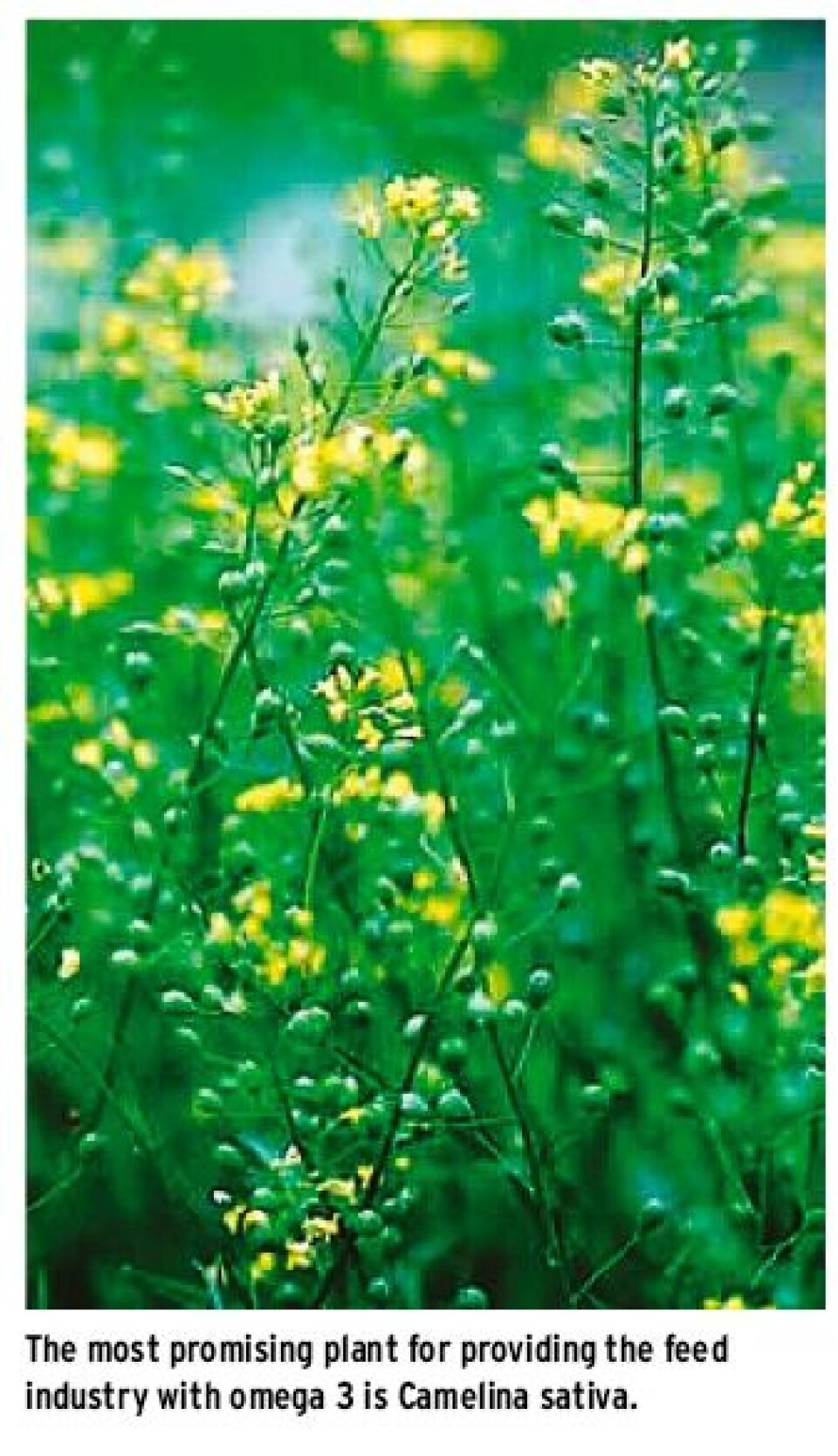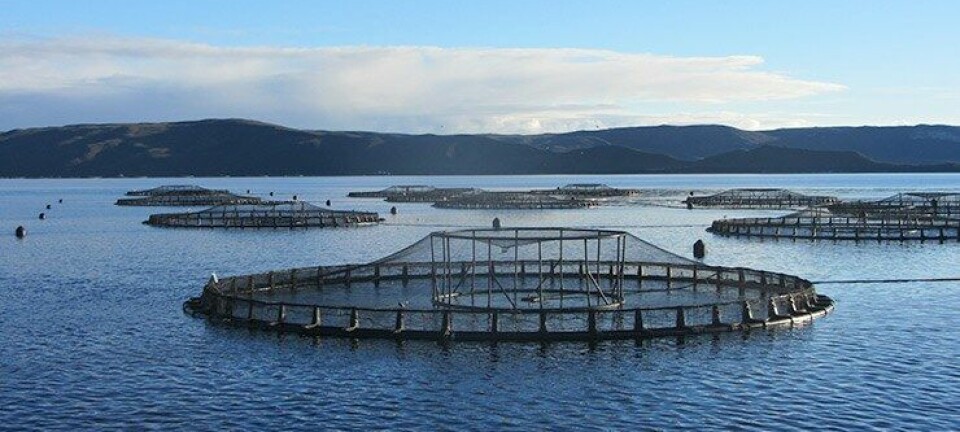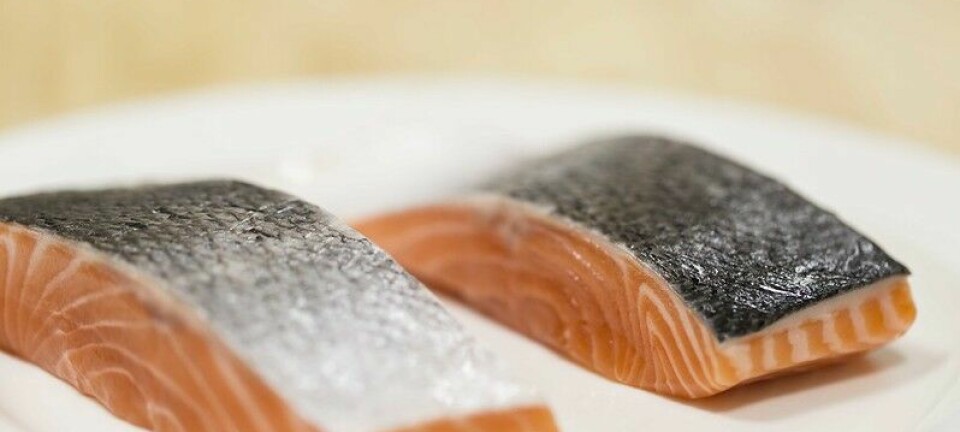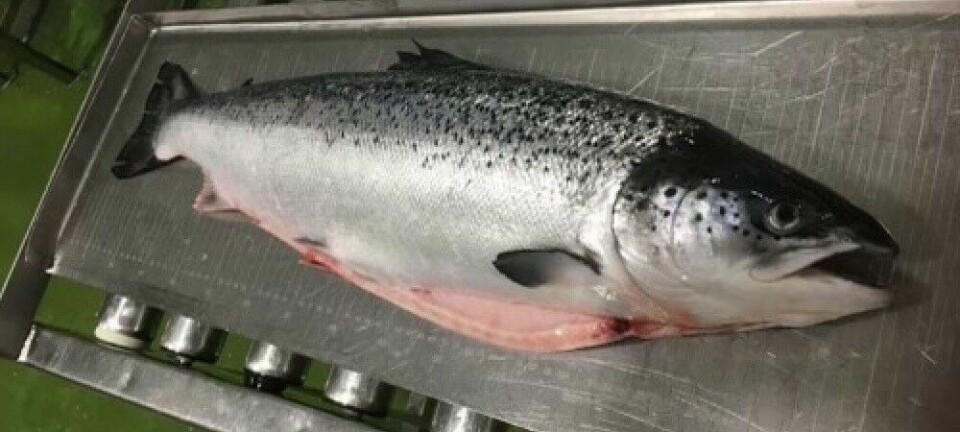Vegetable oils in fish feed
Vegetable oils and fish oils have a different composition of fatty acids Previously, fish oils rich in EPA and DHA have been used as a source of fat in the feed for farmed fish. Both vegetable oils and fish oils contain a mixture of saturated, monounsaturated and polyunsaturated fatty acids, but the composition of the individual fatty acids is very different. The variation is great from vegetable oils to fish oils, but also between different vegetable oils, and between fish oils from different species. Some vegetable oils, such as linseed oil, have a high content of the polyunsaturated omega-3 fatty acid 18:3n-3 (LNA/ALA) which does not have the positive biological effects that are given by the marine omega-3 fatty acids EPA and DHA. Marine fish species and salmon have a definite need for the marine omega-3 fatty acids EPA and DHA. To some extent, salmon can convert LNA/ALA into EPA and DHA, but they still need to be provided with some of the marine fatty acids through the feed in order to achieve optimal growth and health. In order to ensure that the level of saturated, monounsaturated and polyunsaturated fatty acids in vegetable oil based feed is at roughly the same level as in fish oil-based feed, a mixture of linseed oil, rape seed oil and palm oil can be used (instead of a single vegetable oil). This results in good digestion of the fatty acids and more effective storage of the marine omega-3 fatty acids by the salmon. In addition, the salmon acquires high levels of the preferred fatty acids for use in its metabolism, as well as high levels of the omega-3 fatty acid LNA/ALA which can be converted to marine omega-3 fatty acids (EPA and DHA), but only to a limited extent. The successful production of farmed Atlantic salmon is possible when up to 100 % of the fish oil in the feed is replaced by a mixture of vegetable oils, provided that fish meal is used as source of protein since the salmon’s EPA and DHA requirement is covered by the small proportion of fat found in the fish meal. Salmon which have consumed fish oil based feed in the period immediately preceding harvesting (when the weight of the salmon is doubled) manage to increase the EPA and DHA content in the muscle, but they don’t reach the same level that is achieved by salmon whose feed has always included fish oil. Sensory analyses reveal how the taste (flavour and odour) of different foodstuffs is experienced. The taste of salmon is known to vary, depending on the composition of the salmon feed. However, studies show that fillets from salmon fed a mixture of vegetable oils have roughly the same taste and aroma as fillets from salmon whose feed has included fish oils, but with a somewhat less characteristic marine taste and aroma. Salmon fed vegetable oil based feed and which are given fish oil for 4-5 months prior to harvesting taste the same as salmon which have always been fed fish oil based feed.

Plant proteins in feed
The composition of feed affects the growth and health of fish. Consequently, the optimal composition of the protein component of the feed is essential in order to ensure that farmed fish keep healthy, and grow and develop normally. Plant proteins are an alternative protein source to fish meal in feed for farmed fish.
The source of raw material affects feed uptake Compared to fish meal, most plant raw material generally contains little protein and high levels of carbohydrate, although there are exceptions. Soya, beans, peas and gluten from wheat and maize have relatively high protein content, making them good alternative sources of protein in feed for farmed fish. Salmon which are predominantly fed plant proteins eat less than salmon which receive fish meal as a source of protein. Research at NIFES has shown that if diets based on plant protein have the same amino acid profile as fish meal-based diets and are given a small addition of hydrolysed squid, hydrolysed fish protein and / or krill meal to improve the taste, the salmon’s feed intake is improved. Nevertheless, salmon fed high levels of plant proteins does not have the same growth rate as salmon fed high quality (LT-quality) fish meal only. Cod have a different eating pattern compared to salmon. They eat more at a time and have a greater protein requirement than salmon. The ability to utilise the nutrients in the feed can also be reduced when the proportion of plant-based raw materials increases, but the cod compensates for this by eating more. When cod are given a feed where up to 50% of the fish meal is replaced by plant proteins, they grow equally well compared to cod given a feed without replacements, where the only protein source is fish meal.























































